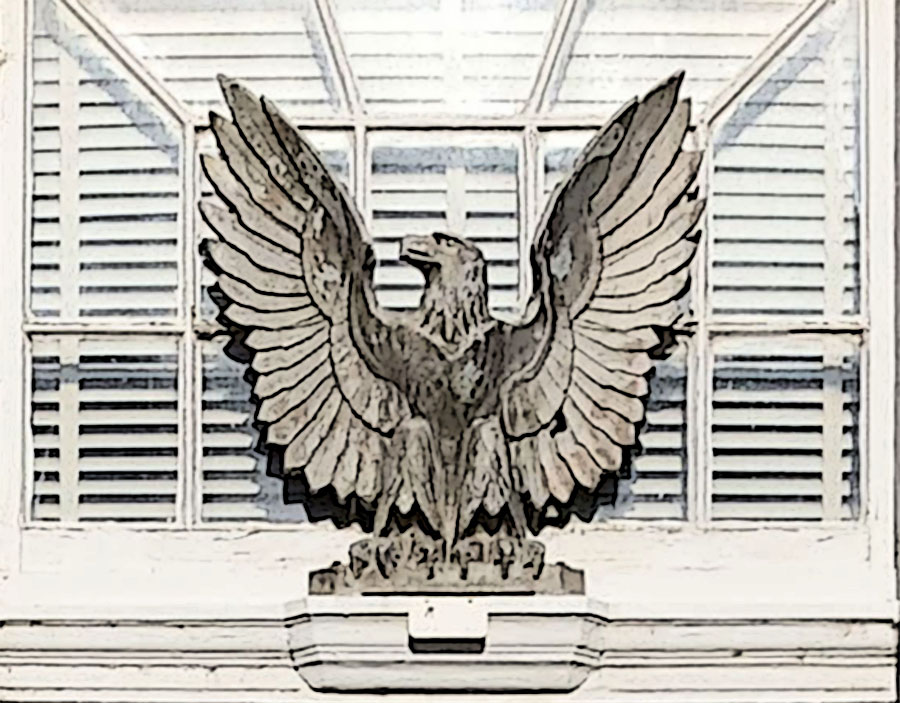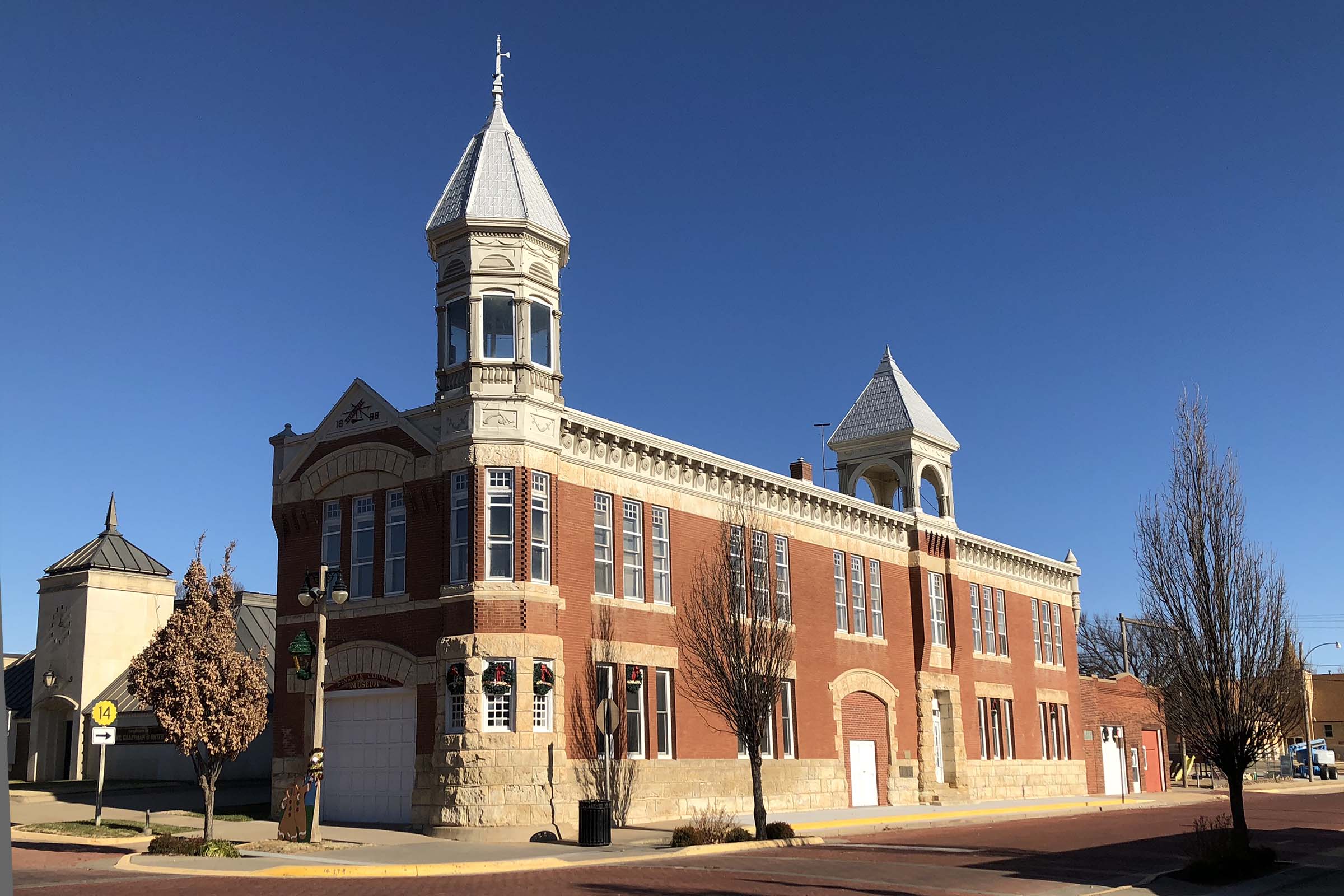
If public minded citizens of Kingman hadn’t said something, the old city building would have been razed and made into something else.
Guess what?
Kingman is for the most part situated on the north side of the Ninnescah River. The town site was surveyed and platted in March, 1874, and a few small frame houses and a small frame mercantile store popped up. Main Street points due north and south and intersects with Highway 54 which was the route of the old Cannonball Express. The Cannonball began service in 1876 , running through Pratt to Coldwater and later to Greensburg. In 1877, the last buffalo in the county was killed.
Had civilization arrived?
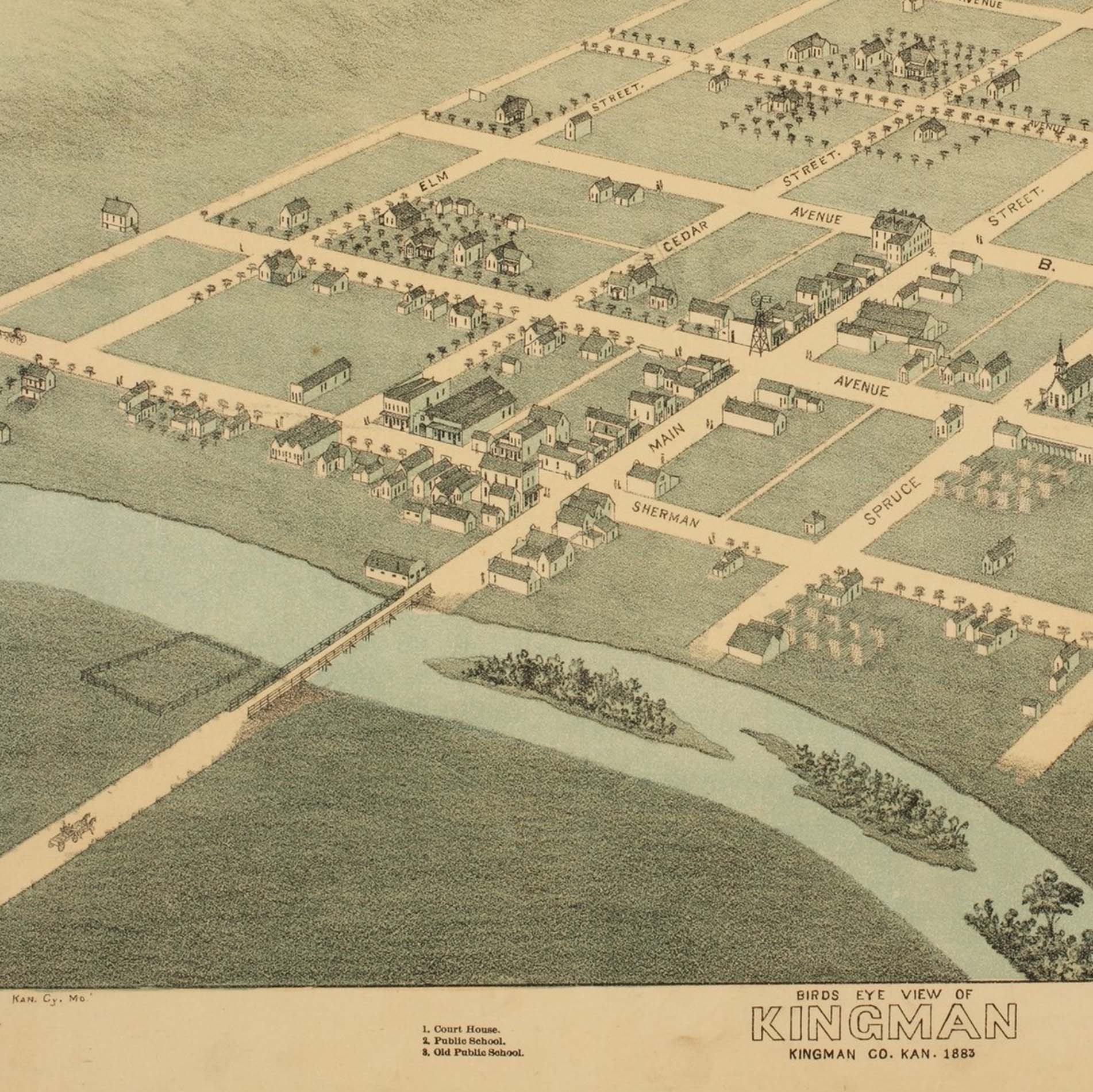
detail Kingman Kansas 1883 birds eye view, source Kansas Memory
By 1883, Kingman, a sleepy town on the Ninnescah, boasted a “population of about 350, and the business of the place … represented by four general merchandising stores, two hardware, two groceries, two drug stores, two millinery establishments, one furniture store, one jewelry, one bank, two hotels, one restaurant, one harness and saddlery, one lumber yard, three livery stables and two newspapers.”
By 1884, everything changed with the arrival of the first train that roared into town. In the following years there were booms and busts, good crops and bad, but mostly settlers kept coming full of hope. The First National Bank of Kingman was organized the same year and a three-story building was contracted to be built.
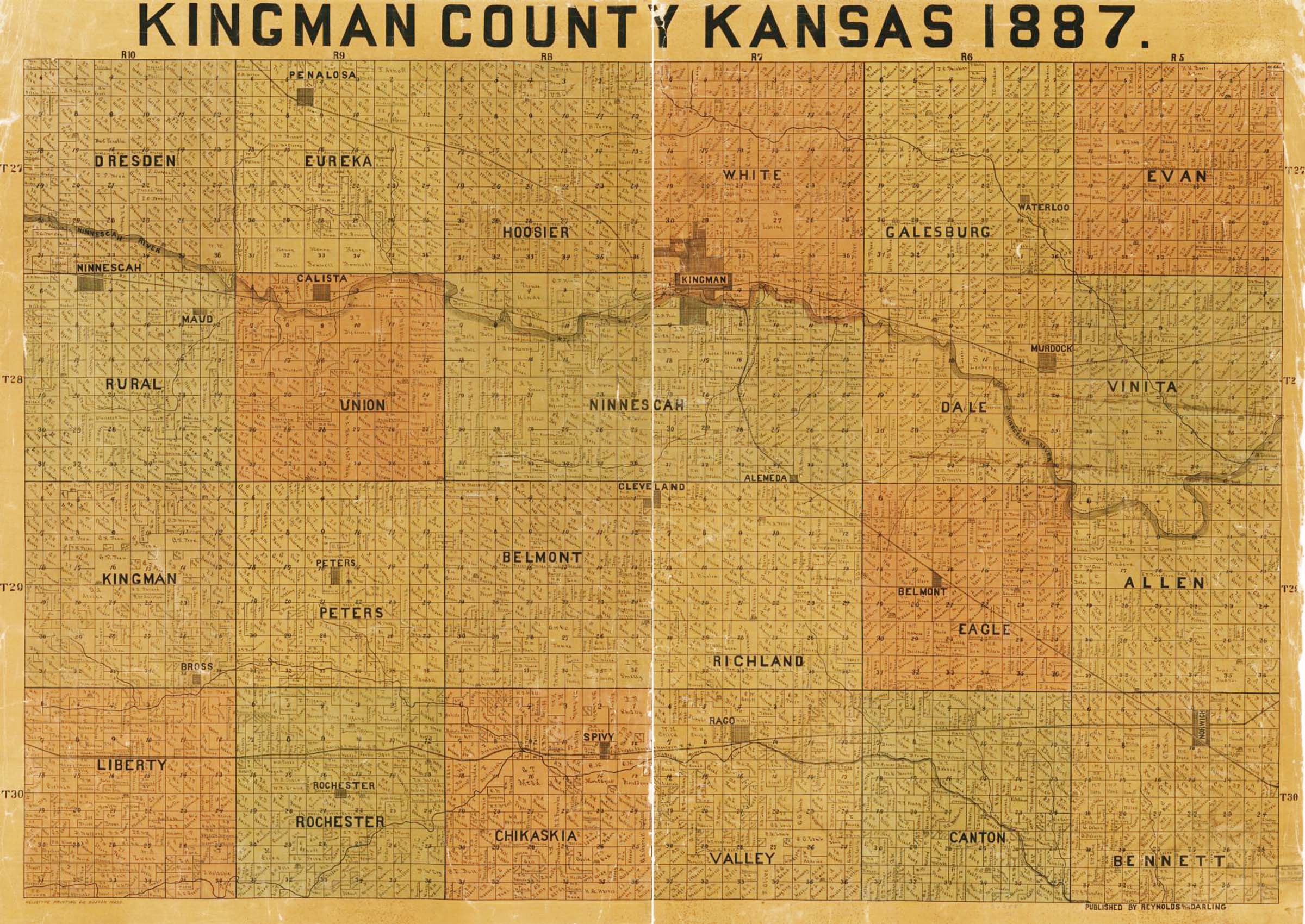
kingman county kansas 1887
By 1887, the Cannonball Express was no more, but two railroads hauled passengers and crops north and south, east and west. The plots of land still owned by the US government were down to a few.
Kingman needed a city building.
A special election was held on February 13th 1888 and the project for a new city building was approved by a 63 vote majority. In March the city council considered the six bids submitted for construction and unanimously accepted the highest bid submitted by John A. Cragun of the Kingman National Bank. The cornerstone ceremony was held in June and the building completed in December. The two-story brick and stone structure housed the city offices, jail, and fire department. The front tower originally housed a bell that was used for special occasions and fires. The second tower was used to dry fire hoses after use.
This was all fine and good until 1967.
Kingman decided to build new city offices. The Sinclair Oil Company stepped in and offered $25,000 for the old building, and later reduced that amount to $15,000. Their plan was to raze the gorgeous building and build a gas station.
Thank goodness, public spirited citizens raised a ruckus and squashed that horrible idea.
The Kingman County Historical Society saved the day.
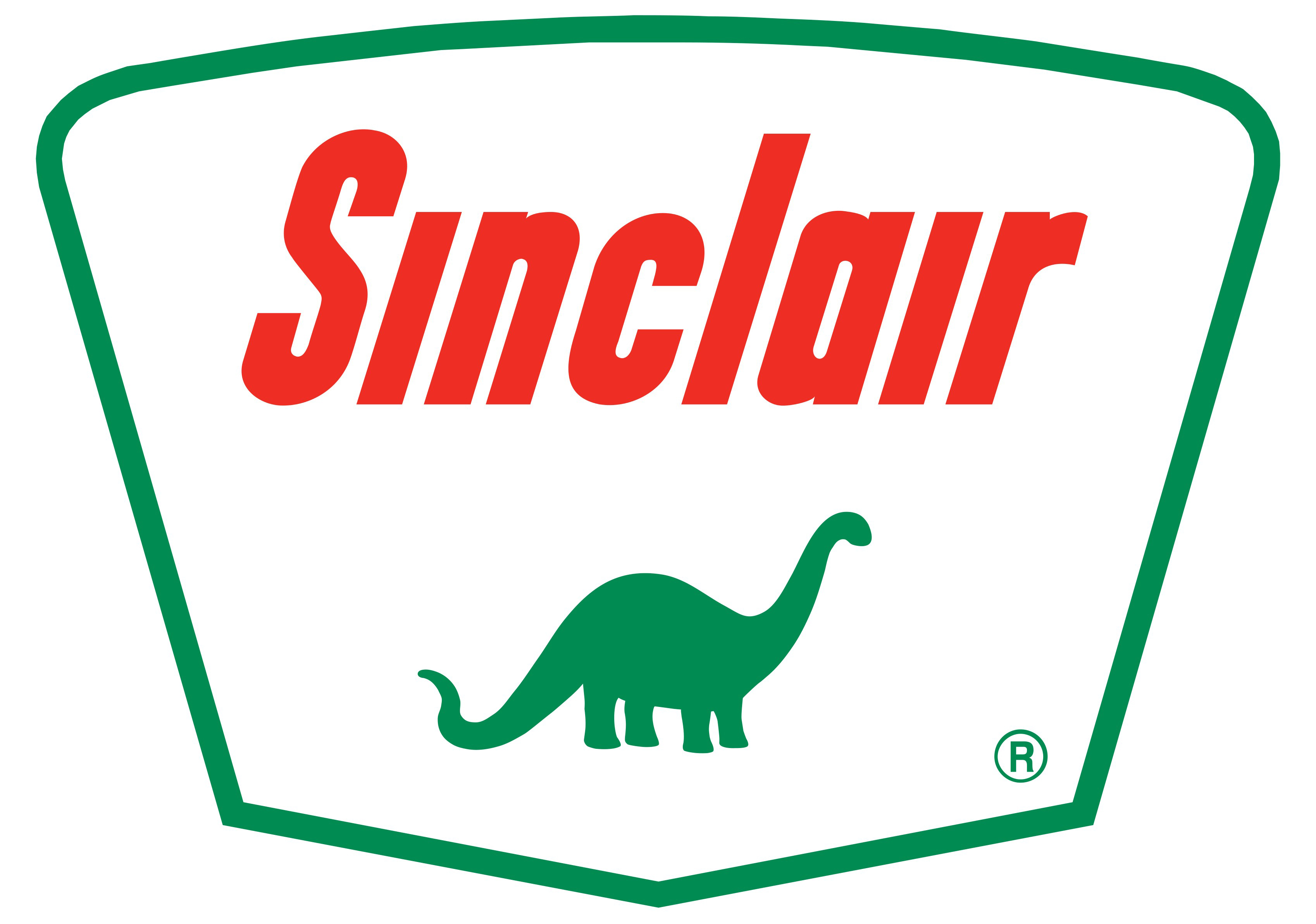

Kingman 1883





